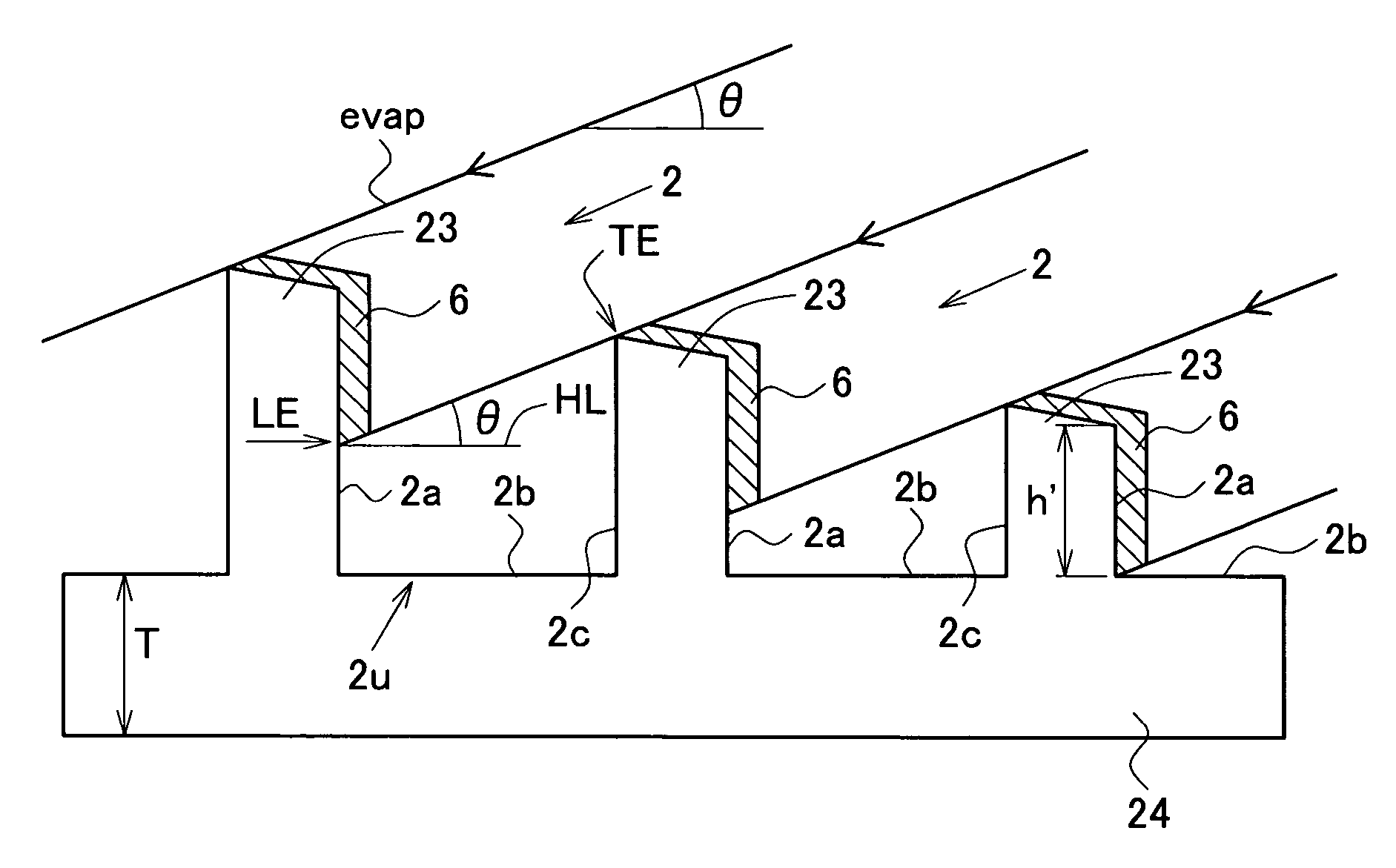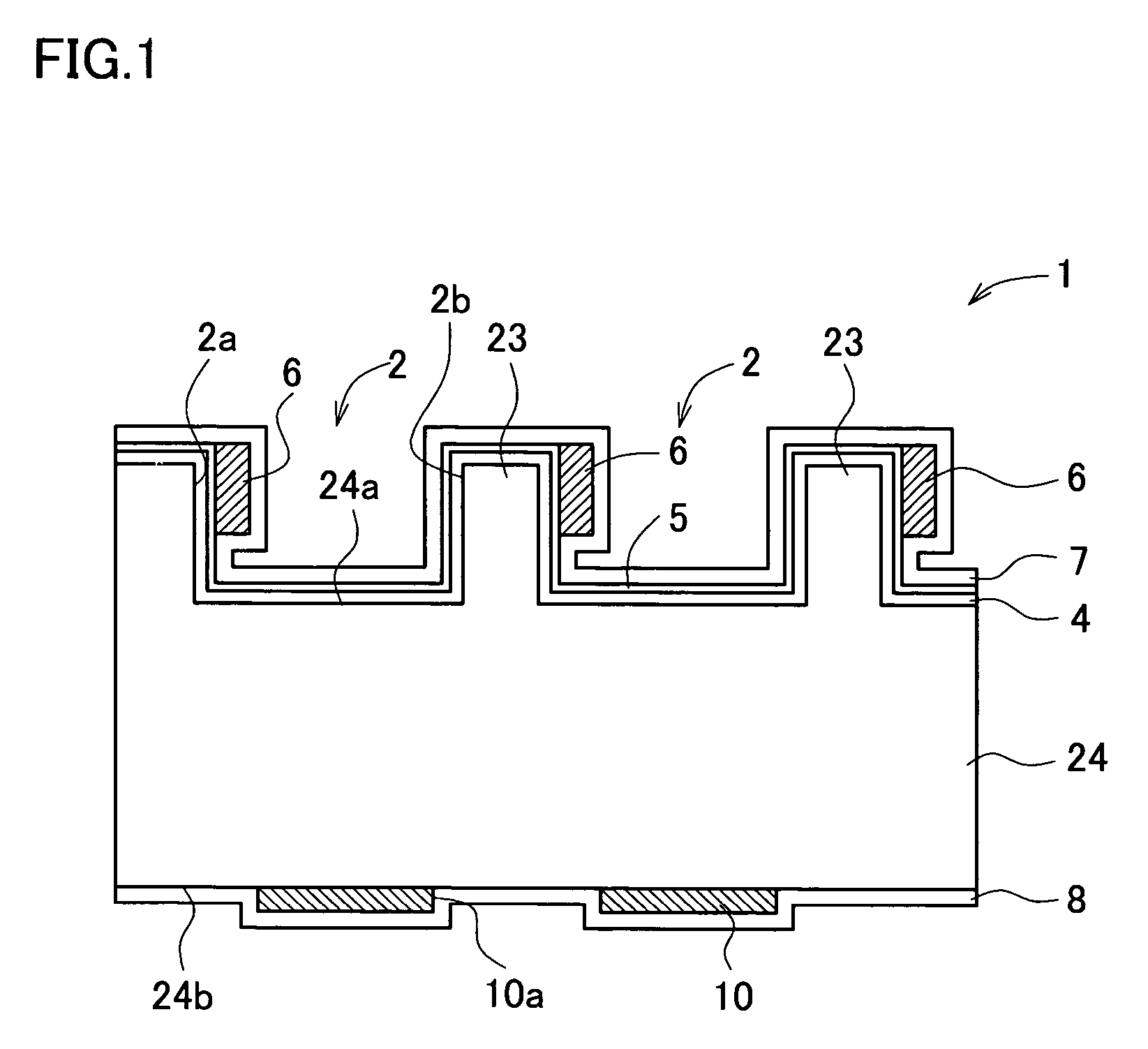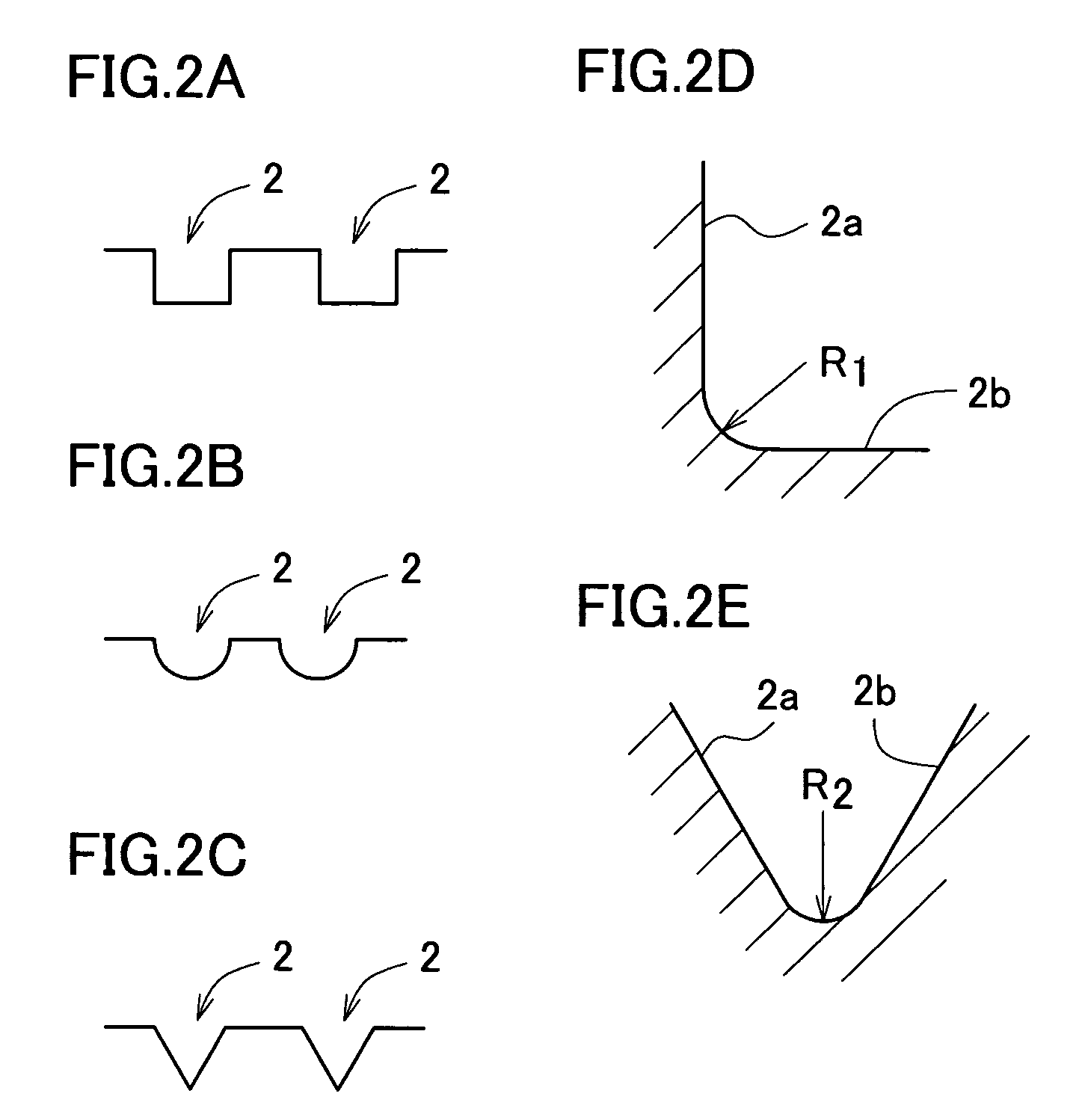Solar cell and its manufacturing method
a solar cell and manufacturing method technology, applied in the field of solar cells, can solve the problems of increasing the amount of abrasive grains retained in the working site, increasing the thickness of the semiconductor single crystal substrate, increasing the cutting width, etc., and achieves the reduction of contact area, energy conversion efficiency, and resistance loss and shadowing loss of the solar cell.
- Summary
- Abstract
- Description
- Claims
- Application Information
AI Technical Summary
Benefits of technology
Problems solved by technology
Method used
Image
Examples
first embodiment 1
[0055]FIG. 1 is an enlarged sectional view partially showing one embodiment of a solar cell according to a first aspect of the invention. The solar cell 1 is configured so that a large number of grooves 2 of several-hundred-micrometers wide and approximately several tens micrometers to 100 μm deep are formed in parallel on the first main surface 24a of a p-type silicon single crystal substrate 24 sliced out from a silicon single crystal ingot. These grooves 2 can be carved en bloc using a set of hundreds to thousands of concentrically-joined rotary cutting edges which rotate all together, where it is also allowable to divide the carving operation into several numbers of run.
[0056]On the first main surface 24a of the substrate 24 having the grooves 2 thus formed thereon, an emitter layer 4 is formed by thermally diffusing phosphorus as an n-type dopant, so as to produce a p-n junction portion. On the emitter layer 4, a thin silicon oxide film 5 which functions as a tunnel insulating ...
second embodiment
[0084]An embodiment of the method of fabricating the solar cell according to the second aspect of the invention will be described. A target solar cell in the second embodiment is again the OECO cell shown in FIG. 1, similarly to the first embodiment. The aforementioned first embodiment used the upward-edge-type, high-speed rotary blade, dared to allow variation in the depth of the grooves 2 to generate according to the non-uniformity in the substrate thickness, and instead imposed the limitation expressed by the formula (1) on the depth of groove h′ at the thinnest position in order to reduce the shadowing loss and electrode resistance loss. On the contrary, the present second aspect aims at equalizing the groove depths within a single substrate as possible.
[0085]In the present embodiment, a p-type silicon single crystal ingot, which is prepared by adding a Group Ill element such as boron or gallium to a high-purity silicon and manufactured by the CZ method or FZ method, is obtained...
example 1
[0094]A p-type single crystal silicon wafer 1 for fabricating solar cells, containing gallium, which is a Group III element, as an impurity element (diameter=4 inches, minimum thickness=270 μm, maximum thickness=300 μm, resistivity=0.5 Ω·cm) was obtained, and the thickness distribution thereof was preliminarily measured using a dial gouge. Based on the measured results, a plurality of parallel grooves 2 having a rectangular section were formed as shown in FIG. 3 using a dicing saw (high-speed rotary blade) in parallel to a line connecting the thickest position and thinnest position of the wafer. The edge portion of the grinding blade used herein was 450 μm in thickness, 50 mm in diameter and had an inter-edge interval of 50 μm. Based on the thickness of the grinding blade defined as 450 μm and on the angle of deposition, described later, as 5°, the minimum depth of the groove h was defined as 50 μm. Process conditions defined herein included a speed of rotation of the grinding blade...
PUM
 Login to View More
Login to View More Abstract
Description
Claims
Application Information
 Login to View More
Login to View More - R&D
- Intellectual Property
- Life Sciences
- Materials
- Tech Scout
- Unparalleled Data Quality
- Higher Quality Content
- 60% Fewer Hallucinations
Browse by: Latest US Patents, China's latest patents, Technical Efficacy Thesaurus, Application Domain, Technology Topic, Popular Technical Reports.
© 2025 PatSnap. All rights reserved.Legal|Privacy policy|Modern Slavery Act Transparency Statement|Sitemap|About US| Contact US: help@patsnap.com



